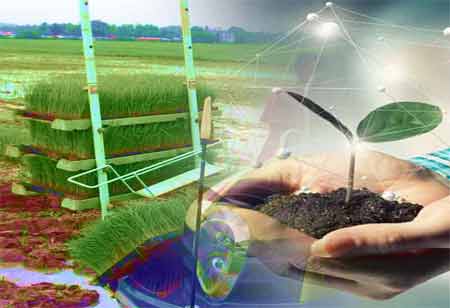Thank you for Subscribing to Agri Business Review Weekly Brief
Farming Trends That Caught Our Eye
The agriculture sector has been a key contributor to the economy. Innovative methods like hydroponics, aquaponics, and vertical farming emerged as potential game-changers recently.

By
Agri Business Review | Thursday, January 25, 2024
Stay ahead of the industry with exclusive feature stories on the top companies, expert insights and the latest news delivered straight to your inbox. Subscribe today.
Aeroponics is particularly beneficial in land-scarce areas, making it suitable for urban farming initiatives. Its adaptability to various plant types and minimal environmental impact make it an attractive option for enhancing agricultural productivity and sustainability.
Fremont, CA: The agriculture sector has been a key contributor to the economy. Innovative methods like hydroponics, aquaponics, and vertical farming emerged as potential game-changers recently. These methods offer fresh solutions to long-standing issues in agriculture, signifying a shift towards a sustainable future and providing hope for the future of the agricultural landscape.
Innovative Methods
Hydroponics
Hydroponics, a method of growing plants without soil, is gaining popularity in India's agriculture due to its year-round cultivation, efficient water usage (up to 90% less than traditional farming), and suitability for urban areas with limited arable land, such as turning rooftops and vacant spaces into productive agricultural and kitchen garden hubs.
Aeroponic
Aeroponic agriculture is a method that uses air or mist to grow plants without soil or traditional hydroponic mediums. It uses up to 95% less water than conventional farming, offering faster growth rates, increased yields, and reduced disease susceptibility. Aeroponics is particularly beneficial in land-scarce areas, making it suitable for urban farming initiatives. Its adaptability to various plant types and minimal environmental impact make it an attractive option for enhancing agricultural productivity and sustainability.
Aquaponics
Aquaponics, a method in India that combines aquaculture and hydroponics, creates a symbiotic ecosystem where plants and fish coexist, yielding vegetables and fish simultaneously and minimizing waste by using fish waste as fertilizer.
Vertical
Vertical farming, a method of growing crops vertically, has effectively addressed land scarcity in India by increasing yields, reducing transportation costs, and supplying fresh produce to local consumers.
Benefits for Agriculture
Resource Efficiency, Year-Round Production
Innovative farming methods optimize resources like water, land, and nutrients, enhancing productivity and reducing waste. They enable year-round cultivation, breaking seasonal farming limitations and ensuring a steady food supply even under adverse conditions.
Environment-Friendly and Economically Viable
Hydroponics and aquaponics reduce pesticide and herbicide dependence, promoting healthier produce and environmental sustainability. Despite higher initial costs, long-term benefits like higher yields and reduced resource consumption foster economic sustainability, growth, and stability in the sector.
Impact on Sustainability Goals
Food Security, Climate Change Mitigation
Innovative farming methods enhance food security by ensuring consistent fresh produce supply and contribute to climate change mitigation by reducing traditional farming's carbon footprint, aligning with India's commitment to sustainable agricultural development.
Rural Development and Employment Opportunities
Sustainable farming practices empower farmers, improve their livelihoods, and stimulate rural development. They also create employment opportunities, foster economic growth, and alleviate urban migration pressures.





